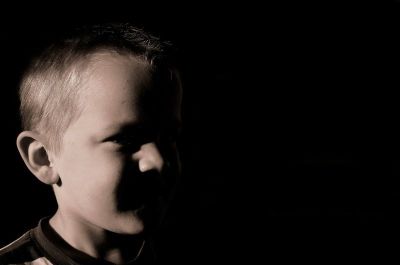Here's how religious institutions can prevent child abuse

An Illinois Attorney General report recently revealed that more than 450 Illinois Catholic priests sexually abused nearly 2,000 children since 1950.
The news was gut-wrenching — and, tragically, all too familiar. In recent years, nearly every faith tradition seems to have been rocked by child sex abuse scandals.
The problem isn't religion itself, of course, or even religious institutions, which play an enormously important role in many Americans' lives. In fact, that trusted role is exactly why places of worship are uniquely positioned to prevent and respond to child abuse. But to deliver on that mandate, religious institutions need to implement specific policies and practices to protect kids.
Three-quarters of Americans say religion is fairly or very important to them. In addition to bringing people closer to their faith, many churches, mosques, temples, and synagogues provide support and guidance in challenging times and a sense of community.
Unfortunately, spaces that should be a source of safety and solace too often become the scene of the most traumatic moments of children's lives. A survey of over 5,000 sex abuse survivors revealed that religious settings were the second-most-common institutions where child abuse occurs, behind schools.
It doesn't help that child abuse prevention policies are often wildly inconsistent from one house of worship to the next. For instance, just 16% of Catholic Archdioceses have policies to conduct background checks on adults who attend overnight events with children, according to a 2020 investigation.
Nearly all faith leaders want to do everything in their power to prevent abuse and protect kids. But many don’t know where to start. In actuality, many of the most effective safety practices are simple and can be implemented at little cost.
First, religious institutions should not give any adult the opportunity to interact with a child alone. Every interaction with children should be observable, interruptible, and in the presence of at least one other adult.
Religious institutions should also look at their physical building with an eye to safety. One way to improve safety is to ensure religious education classroom doors have glass windows so that any interaction between a teacher and student is observable.
It's hard to spot a predator beforehand if they have no criminal record. It's much easier to deny them the chance to abuse children by not giving anyone one-on-one time with a kid and keeping all interactions observable by other adults.
Second, religious institutions need clear policies on how employees and volunteers should respond to suspected abuse. Every employee and volunteer should understand their ethical duty to report suspected abuse to law enforcement immediately and directly — and receive regular training on how to do that.
So many institutional scandals in faith communities began with this early misstep — reporting it to someone else in the community hierarchy instead of law enforcement.
Think tank Child USA provides a specific guide on what training and policies should look like, which it developed after analyzing policies at U.S. Catholic Archdioceses and survey data from 1,500 survivors of abuse in scouting organizations, 450 elite athletes, and 50 survivors and family members of survivors of Larry Nassar. For example, staff and volunteers should be required to complete training at least once per year, within one month of being hired, and before working with children.
Faith organizations should carry out trainings that have been proven to change how adults protect kids. For instance, research shows that after Texas educators completed training from nonprofit Darkness to Light, they increased reporting of previously unrecognized abuse by 82%.
When it comes to reporting suspected abuse, organizations should require staff and volunteers to contact law enforcement within 24 hours of first suspicion or disclosure of the abuse — or face termination or legal consequences.
These rules stand even if the alleged offenders are faith leaders, friends, or potential donors. The priority should be to protect children, first and foremost.
Religious institutions should implement whistleblower protections and foster cultures in which people feel comfortable coming forward with concerns, knowing they'll be taken seriously. No one should be told they're overreacting or fear losing their job if they report abuse.
On rare occasions, abuse may be disclosed to faith leaders in confidence or in a sacred setting. When that happens, religious leaders must immediately report suspected child abuse to authorities.
That doesn't always happen. In 33 states, clergy aren't required to report alleged child abuse if they learn about it in a confessional setting — despite the fact that nearly all other professionals who come into contact with kids, ranging from teachers to doctors, are required to report abuse, even when informed of it in confidence.
In some states, like Arizona, clergy-penitent privilege laws even shield religious institutions from answering questions or turning over documents to law enforcement during an investigation.
When religious institutions take a stand to protect children, it sets off a chain reaction of faith communities and individuals working together to end child abuse once and for all. More must meet that challenge to ensure all children grow up safe and happy — inside religious spaces and out.
Teresa Huizar is CEO of National Children's Alliance (nationalchildrensalliance.org), America's largest network of care centers for child abuse victims.



























